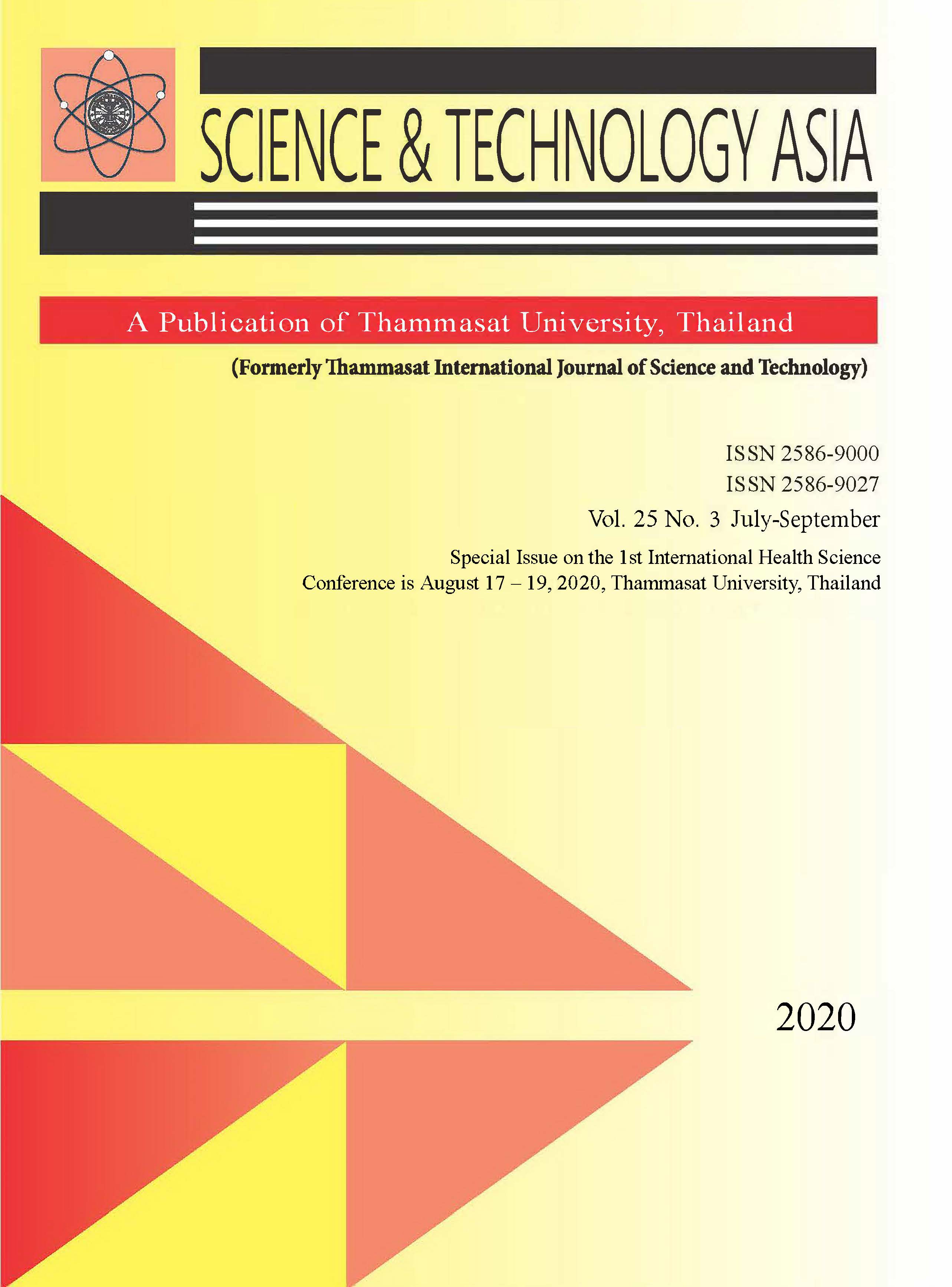Disease Surveillance in Mouse Colony Using Indirect Sentinel Animal Program at Laboratory Animal Center at Thammasat University
Main Article Content
Abstract
Surveillance of communicable diseases among laboratory animals is an important component of veterinary care within any animal research facility. This study aimed to monitor the health status of research animals at the Laboratory Animal Center, Thammasat University, using the Sentinel Animal Program. Five female, specific pathogen free, BALB/cMlac mice were designated as sentinel animals. After a 3-day quarantine, the sentinel mice were housed in a cage which was placed in the same laboratory-animal room with 50 other experimental mice. An indirect sentinel test was performed twice weekly for six weeks by transferring soiled bedding from different cages of the experimental mice into the cage of the sentinel mice. After six weeks, the sentinel mice were euthanized. Their blood samples and intestinal contents were tested to detect any evidence of infections by certain pathogens. Their organ tissues were also reviewed under microscope. By using ELISA, cultivation and examination under microscope, no evidence of infections was detected among the sentinel mice. Their organ tissue histology appeared normal. The sentinel mice did not receive any infectious diseases, if present, from the experimental mice. This reflects the generally good health status of other experimental mice simultaneously housed in the same facility. However, it should be noted that certain pathogens cannot transmit via soiled bedding and, hence, may not be able to be detected under the Sentinel Animal Program using the indirect contact method.


